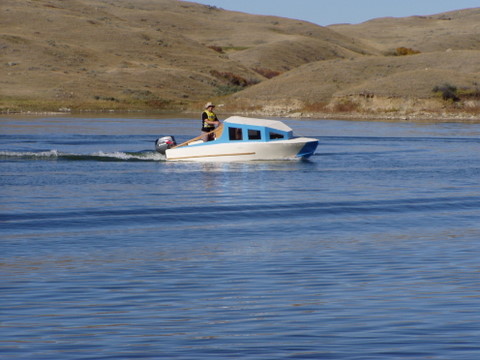Cruisin'
By Ron Porter
Sunday, October 01, 2006
Well, after much waiting (and no shortage of customer complaints!), we finally got weather that made it possible for Devy to spend enough time outside to take a few shots with the new boat under way. We were waiting for cool, sunny, and calm, a combination that is all too rare in these parts. These are the best shots.
The first one shows the spray from the stern. That means I still have a bit of work to do on getting the trim just right. I've already done a fair amount of work to sort out things out and have made some very definite improvements, but still have a few other things to take care of. The basics are pretty simple: certain very normal weight distributions but the boat far enough out of trim that porpoising is difficult to control. That indicates that there are probably some gains in both speed and fuel efficiency to be had, even apart from the porpoising problem. If you're interested in the full story, check out this topic on the GlenL forums.
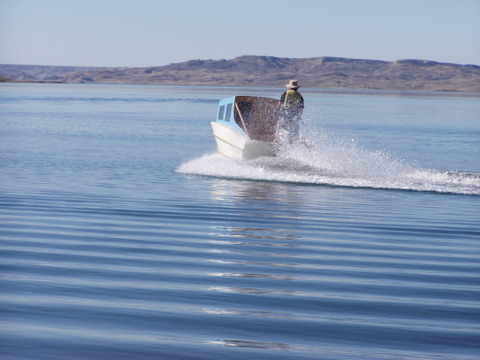
As you can see from this next shot, I've not got it going fast enough that I almost outran the camera! Seriously, though, there is a 6 mile run out to Bearclaw that I've done often enough to know that it was taking 18 minutes. With some wedges between the motor and the transom, there is now more bow-down available. In addition to eliminating the porpoising, it cut the run by 2 full minutes.
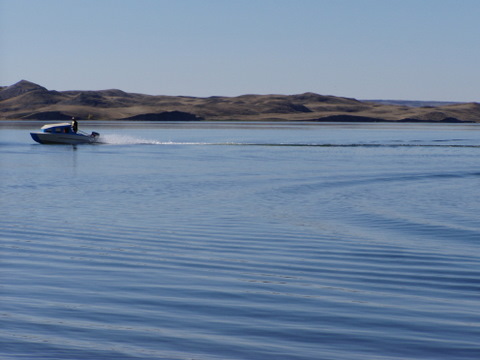
I haven't tracked fuel consumption all that closely, but the improved trim seems to have improved fuel economy as well as helped with speed and handling. According to the folks on the GlenL forum, the little bit of hook that I've got on the hull near the transom is likely the next thing to take care of. That requires pulling the boat far enough off the trailer for me to do the necessary filling and grinding. Yuck! Oh, well, if I had done it right the first time, I wouldn't have to do it again. And if I do it right the second time, we should be able to knock off another minute or so on the run to Bearclaw.
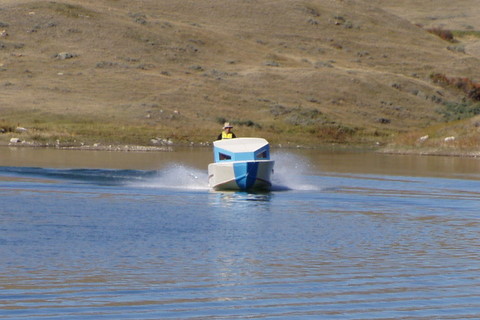
Other reading I've done has convinced me that it will also help to actually raise the whole motor by as much an inch. The anti-ventilation plate (cavitation plate) on the motor is supposed to be somewhere between even with the hull and one inch below the hull. When I was cutting the transom, I elected to go to the one inch deep in order to reduce ventilation problems in sharp corners. Based on the performance estimates I've got, I'm thinking that I should raise the motor up. The reality is that sharp corners simply won't happen often enough for us to give up whatever gains in speed and efficiency can be had by lifting the motor. All the charts say that we should be getting 30-35 mph out of a boat with this type of hull, at this length and weight. That would be at the maximum rpm of 5600. Using the rather unlikely assumption that 3/4 max rpm = 3/4 max speed, then we've already hit the low end of that range. I'll need to get at least a speedometer to get the real story, and a fuel flow meter would really let me get trim bang-on.
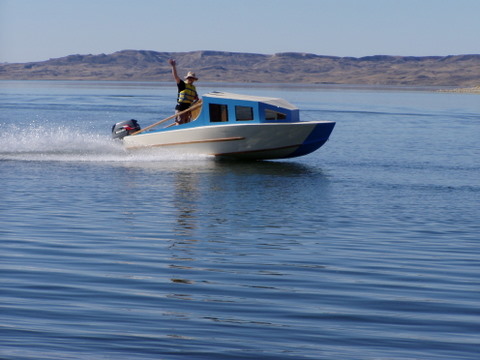
Naturally, if we just putted around all the time, then we wouldn't need to worry about the complexities of trimming a planing hull. Of course, we wouldn't need a 40 hp motor either, or even a planing hull design!
